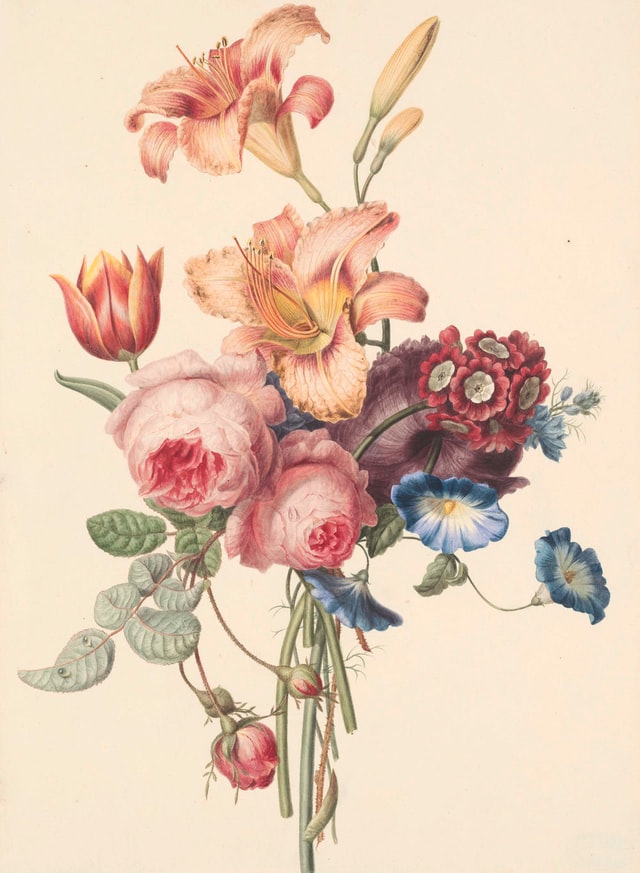- Home
- Travel & Leisure
- Common Features of Floral Paintings

Common Features of Floral Paintings
The characteristics of floral paintings differ but have a few things in common. These characteristics include the use of asymmetrical balance, asymmetrical coloration, and close-ups of flowers. Botanical illustrators used these features to show the perfect version of each plant. Here are a few other common features:
Gradation of colors from light to dark
There are two types of color gradation. The first is smooth and suggests ambiguity, while the second is sharp and suggestive of change. A smooth gradation suggests a gradual change in the subject. A sharp gradation suggests a dramatic change. Artists use various techniques to create color gradations. For instance, a tree trunk often has rough gradations, while smooth objects have soft gradations.
Another method of gradation is called hatching. The thinner the hatching line, the darker the result. It can also be used to soften color gradations. Artists such as Peter Paul Rubens and Steve Huston use light and dark hatching to make the transition from light to dark areas more subtle and smooth. This technique reinforces form and texture in floral paintings. Regardless of your medium, a method is likely the best for you.
Asymmetrical balance
In floral paintings, asymmetrical balance is a principle that emphasizes the proportional relationship between two elements. The main component of asymmetrical balance is color, which grabs the eye immediately. Contrasts in intensity or value are another way of achieving equilibrium. For example, a large light flower balanced by a small darker one may work well. Darker shades of color seem heavy and can be placed low in the composition.
While the visual weight of a flower is based on its color, shape, and pattern, asymmetrical balance can be created with both asymmetry and symmetry. For example, lighter materials are used outside the arrangement, while heavier materials are used inside the composition. Centering is another technique for achieving asymmetrical balance. By centering the dominant plant material on a design axis, the viewer is drawn to the main feature.
Botanical illustrators depicted the ideal version of every plant
Before microscopes became popular, botanical illustrations were the only way to accurately portray plants’ appearance. Botanical illustrators used natural light, observation, and scientific methods to depict the ideal version of every plant. As science advanced, botanical illustration became more of a celebration of nature and the study of plants. Botanical illustrators also learned about botanical anatomy. It’s no wonder that their illustrations have been considered some of the best botanical art in history.
Early botanical illustrators drew more than just flowers. Many of them incorporated the therapeutic value of plants into their illustrations. They often studied the same flower species under a microscope and combined the findings into a single drawing. For example, Franz Bauer’s 1802 illustration of the cell nucleus is considered the first of its kind. In 1802, he described the anatomy of each plant’s cellular structure and adapted the results into a new illustration.
Flower close-ups
There are many features of floral paintings that you’ll notice in a good example. A common theme is the inclusion of vibrant colors. Typically, this is done with bold brushstrokes and often includes a flower picked and arranged. You’ll also likely notice that the flowers are arranged in rows. While the composition of a floral painting may vary, you’ll find that the colors are often similar across them.
Traditionally, floral paintings have been done with different techniques. Artists have used the artist’s brush, ink, and color palette for centuries. Generally speaking, there are four basic methods for depicting flowers. Different painting styles developed distinctive characteristics. Using a single technique or a combination of several can produce high-quality artwork. For example, Guo Ruoxu may contain several different colors or textures.
Symbolism of flowers
Floral paintings have long represented the symbolism of different concepts. Flowers represent many things, from love to beauty, light to dark, and happiness to sorrow. The diversity of their symbolism has inspired artists to include them as part of their works. Here is a brief explanation of the meaning behind floral paintings. The most important symbol of all is beauty. The more colorful and beautiful a flower is, the more it symbolizes.
Throughout the ages, flowers have held symbolic significance. They have been used in religious art for centuries. The Victorian era and the Impressionists saw flower paintings and their significance explosion. Floral paintings were ubiquitous, and unending variations in flower forms kept interest high. Throughout the 1800s, flowers were even used as flirtation and to convey feelings. Symbolic meanings were also incorporated into paintings by renowned artists.
Influence of Pop Art
The 1950s and 1960s were pivotal times in the history of pop art, with the introduction of new and exciting techniques for production and presentation. Artists of this period drew on the traditions of painting icons and mass culture to create playful and challenging works. In particular, Pop Art embraced a style of painting that was both commercial and satirical, utilizing everyday objects and icons in spectacular, highly stylized forms.
The influence of Pop Art on floral paintings is most evident in how the artist approached the flowers. Warhol’s flower paintings have a subtle repetitive pattern and a variety of color stories. On the other hand, Haring and Lichtenstein stick to their signature style of cartoonish imagery. These pieces show a deep understanding of the relationship between flowers and pop art. This sensitivity to pop art has influenced the style of floral paintings ever since.





